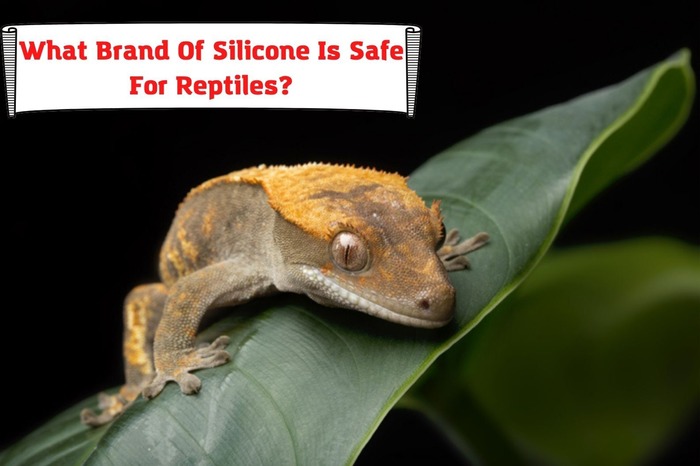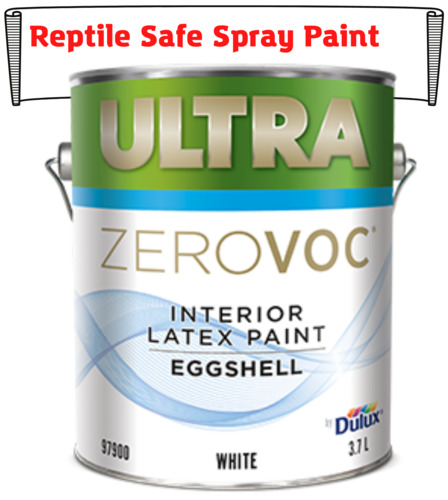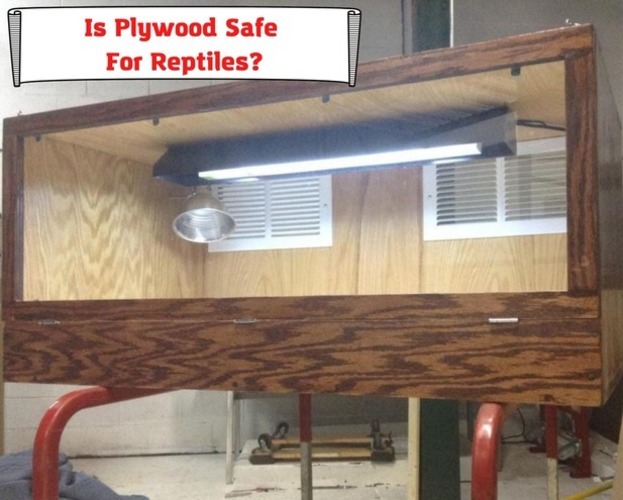Styrofoam is considered to be an all-purpose material you can use for your terrarium. People use it to build different decorations, hides, and additional equipment for their terrariums and enclosures. But is Styrofoam actually safe for your reptiles? We’ve decided to find out and analyzed all risks you can have with using this material for any hides and decorations.
Although many people will say that Styrofoam is absolutely safe and can be used for different purposes, it’s not completely true. We will not make our article very complicated and will not include any hard-to-understand terms. But we will practically explain to you why and how you can use Styrofoam to minimize the possible harm to your pets.

Here are some important outlines:
- Is Styrofoam actually safe for reptiles?
- What kinds of danger can Styrofoam hold?
- How to make Styrofoam really safe for your reptiles?
- Why we don’t recommend using Styrofoam for terrariums?
- What are the alternatives to using Styrofoam?
Let’s get started!
Is Styrofoam that safe for terrariums?
It’s hard to say “yes” or “no” without explaining. You should know that any material can be dangerous for your pets if used incorrectly. For example, we’ve seen some hides that were sold in pet shops and they weren’t safe because they were poorly sealed or had sharp edges. Even though they are certified, you can’t say they were really safe for reptiles.
Also, things made from Styrofoam may be safe or unsafe depending on their important features. You can expect them to be completely safe if they were made according to the rules that we are going to tell you in the next parts of this article.
Here are some important facts that can cause danger:
- Styrofoam balls. Unfortunately, many reptile owners don’t know how to cut Styrofoam and they leave a lot of open sides with the possibility to bite some balls off the whole piece for their pets. And believe us, the pet will not overlook this chance.
- One type of Styrofoam may be safe while some others will not be appropriate to use in a terrarium. It’s hard to check because sellers rarely show all the chemical components of the products. So, it’s actually a risky thing.
- Porous structure. Well, water will be absorbed by Styrofoam. And the fact that a reptile lives in a terrarium creates big risks of dirty water absorbing into the hide or a decoration piece. This will cause a bad smell and biological risks for your reptile.
- Easy eating of Styrofoam. This is not a very solid material and your animal can easily bite off some pieces. If the reptile ears one ball of Styrofoam, it’s not that bad. Bit if the animal likes the process, it can eat the entire decoration unit and get poisoned or just choke on one of the pieces.
- Individual reactions. We’ve seen some reptiles that had allergies to Styrofoam. Up until their owners understood it, it was too late and the animals were struggling to survive. So, you should be careful with adding new Styrofoam objects to your terrarium.
Also, we wouldn’t say that Styrofoam is a very practical material that you can use in a terrarium. You will not find a lot of professionally made hides and decoration objects for enclosures made of Styrofoam. Why? Because it’s not very durable and not solid at all. It can fall apart very soon after you place it in your terrarium.
Also, the material will not look beautiful for a long time. It will quickly take some colors. For example, if your reptile decided to lie on the Styrofoam object, it may quickly become green. If your animal loves putting some food on Styrofoam, it will take the colors of the food.
What to do if your reptile eats Styrofoam?
Well, first of all take out all the Styrofoam objects that are now in the enclosure and forget about using them in the future. Then, make sure that your animal is OK. Look at the unit and try ti understand if the animal has eaten a lot of Styrofoam. If it’s just a ball or two, just keep an eye on the animal.
If it’s a big piece of Styrofoam, be ready to go to the vet immediately. Styrofoam will not digest successfully, it should be taken out somehow. And this is extremely hard to do at home. Your vet will have all the needed materials and medications for this. In some cases, the animal will even need to have an operation.
In some cases, the animal will just be sick and you should make sure that it throws up all the Styrofoam. Better still go to the vet and check that everything is fine now. Otherwise, the digestion system may get clogged and the animal will just die.
How to make Styrofoam safe for reptiles?
If you still want to use Styrofoam, you may try and make it much safer. For this, you should make sure that your animal will have minimal contact with the material. So, you will need to seal it perfectly with different materials that are reptile-safe.
For this, you may use pure silicon or some other sealants that are made especially for terrariums. It’s very important to buy a sealant that is 100% reptile-safe. Your animal may want to chew the sealant and you have to be sure that it won’t make any harm.
Here is what you will need to do:
- Sealing the edges that were cut. The cut Styrofoam is the most dangerous, so it has to be sealed. Just use a big amount of silicone or any other reptile-safe material to seal the edges.
- Sealing the sides that can come in contact with your animal. Think of all the sides that need to be sealed. You may avoid sealing only the spots that will contact with a terrarium – for example, the bottom.
- Sealing the surfaces. Even if this is a decoration and it won’t come in direct contact with your animal, you should seal the surfaces. Use a lot of silicone or any other appropriate material for this.
- Sealing any connections. Usually, all Styrofoam hides and decorations are made of one piece of the material to avoid any connections and gluing. But if you have these connections, don’t forget to seal them.
So, you can make your Styrofoam thing much more reptile-safe if you need this. Don’t think this will solve all your possible problems or entirely prevent any dangers. This is not true – you will only slightly protect your animal from possible and obvious harm.
But still, you should think twice before putting a Styrofoam object into the terrarium. It can be dangerous for your animal and you will not find excuses if something happens because of the new decoration.
What are the alternatives for Styrofoam in terrariums?
There are other foam types that are much safer. For example, polyethylene closed-cell foam might be a good alternative. Actually, all closed-cell foam types are better unless they produce any chemical fumes. Be careful when you are choosing materials for your terrarium in terms of their chemical compounds.
We can recommend even better ways to avoid using Styrofoam:
- Ready-to-use terrarium background units that you can buy in professional shops. A lot of options are available.
- Ready-to-use terrariums with decorations and backgrounds that you don’t need to improve.
- Professional hides and decorations are made of 100% reptile-safe materials. The range is extremely wide in pet shops.
- Specially invented materials that are 100% safe for your reptiles. Different species may even have different materials.
It’s not hard to find an appropriate option for you. Just visit a pet shop and ask an assistant if he or she can give you some ideas. We know hundreds of great manufacturers that offer ready-to-use things made of different chemically inactive materials and certified for use in terrariums.
You should also remember that Styrofoam is not durable while the professional backgrounds, hides, and decorations will be OK for years. You will not even need to clean them all the time thanks to a very practical surface structure.
Final words
We haven’t heard professional vets saying that Styrofoam is deadly dangerous for reptiles. But we’ve seen people who owned reptiles and lost them because of Styrofoam. It doesn’t happen very often, but still. Why would you risk if you have some cool alternatives?
The best alternatives for your terrarium are already made and certified and are waiting for you in pet shops. Yes, they are more expensive than a piece of Styrofoam. But they don’t make you risk the life and health of your pet. Be careful when you want to experiment with any new objects in the terrarium. Before that, make sure that this object will not harm your animal and will not cause any other problems in the enclosure.
- Pacman Frog Looks Deflated – What’s Wrong and What to Do? - August 7, 2023
- How to Put Snake Back in Cage after Feeding? Important Concerns - July 31, 2023
- Repta Boost: Instruction, Considerations, Ways to Use - July 24, 2023



